Aug 02, 2025
Author:Amanda Lyu
Seeing blood in your cat’s urine is something that should never be taken lightly. Whether you’re looking at why your cat is peeing blood or observing cat blood in urine, female or male, it is essential to know the possible reasons and when you should seek assistance.
Let’s take a look at what you should do if that happens, the possible reasons for it, and how you can avoid it to ensure your feline friend’s health.
Understanding the Basics
Hematuria, also known as blood in urine, is the presence of red blood cells in urine. It may be red spotting, spots with pink discoloration, or patches of blood clots in a cat's urine. In kitten urine, the term ‘kitten peeing blood’ is also very frightening and may be a sign of hereditary disorders or bacterial infections.
However, in the case of your cat peeing blood but behaving normally, do not ignore it because cats conceal symptoms well, and even the most serious issues are only cover-ups.
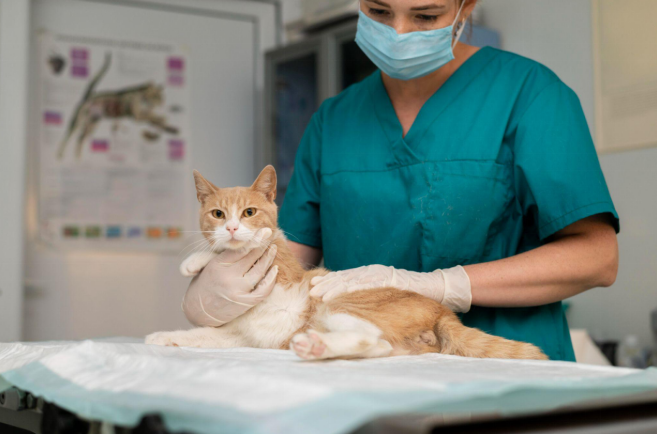
Main Reasons for Blood in Cat Urine
Young cats rarely develop infections, but there is a rise in geriatric or spayed kitties. A cat UTI blood in urine case will often appear with straining or frequent returns to the box. Treatment will include antibiotics based on the results of the urine culture.
The gradual buildup of mineral deposits, usually struvite or calcium oxalate, annoys the bladder lining. This can cause both treatment for blood in cat urine and blood clots when stones scratch the tissue. Your vet may recommend some diets or removal procedures.
A cat with blood in its urine may not be experiencing a bacterial infection, but rather inflammation brought on by stress (FIC or FLUTD). It can recur and be painful.
It most often involves intact males. A urethral plug causes ‘elderly cat blood in urine’ and becomes a life-threatening emergency requiring immediate catheterization.
It can occur in older cats, particularly in cats with blood in cat urine female or male. Although rare, it can be the latent cause in the form of transitional cell carcinoma.
Even if a cat is peeing blood but acting normal, it could very well be hiding pain. Symptoms include:
● Painful or frequent urination
● Urination outside the litter box
● Straining or grunting when defecating
● Increasing water consumption
● loss of appetite
● Blood clots in cat urine or pink-colored urine
In case your cat has blood in urine, you should go to the vet immediately.
● Urinalysis, with the aid of a microscope, to ascertain that there is indeed cat blood in urine and crystals
● Urine cultures that identify bacteria (which are frequent when it comes to UTIs)
● Examination of blood to check kidney health and eliminate body-wide illness
● The identification of stones, obstructions, or tumours is done by imaging (X-ray or ultrasound)
Every disease has its own treatment. Some can be carried out at home to prevent and help with the situation, while others need professional and medical intervention for proper treatment.
A cat UTI blood in urine infection is treated with antibiotics, oftentimes after confirmation. Many vets also recommend the inclusion of canned foods and fluids as avenues towards recuperation.
Prescriptive diets (e.g. dissoluble and solid struvite) and surgery in case of huge stones or in cases where they do not respond to dietary treatments might be helpful.
Re-assessment after specified intervals can be a way of verifying the effectiveness of treatment by the use of cat blood in urine
Support and care for this includes analgesia, dietary intervention, stress reduction, fluid support devices, and environmental enrichment.
Needs immediate treatment, such as catheterization, fluids, and in other instances, surgery.
Cancer treatment may include surgery or chemotherapy; trauma will assist the veterinarians in restraining bleeding and supportive measures through fluids and rest.
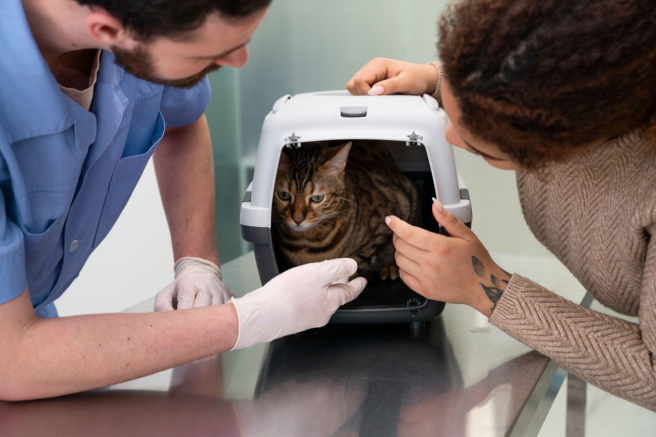
Home Management: Hydration & Nutrition
Proper cat urine blood treatment at home requires the following:
● Increase water consumption, consider a cat water fountain
● Feed urinary-health diets to prevent recurrence with the help of an automatic cat feeder
● Decrease stress, like with calming pheromones (Feliway) or environmental changes
Special Considerations
While all cases require attention, some need more than the rest. They require extra attention and effort from you, not just to treat diseases, but prevent them in the first place.
Female urine blood cases in cats can also reflect hormonal cycles, especially in intact cats. Physical examination through a vet can help distinguish estrus-related spotting and true hematuria.
It's rare, but it can be because of congenital factors or infection. It will invariably require immediate attention. Seek vet attention immediately.
The presence of blood in the urine of an aging cat has mainly been considered as a sign of either an ailment in the kidney, cancer, or the presence of crystals. It is important to have check-ups on a regular basis.
● Keep your cats hydrated with clean, attractive water sources
● Offer balanced urinary diets
● Maintain clean litter boxes in order to support regular urination habits
● Enrichment for stress reduction problems
● Regular vet visits for chronic or repeat problems
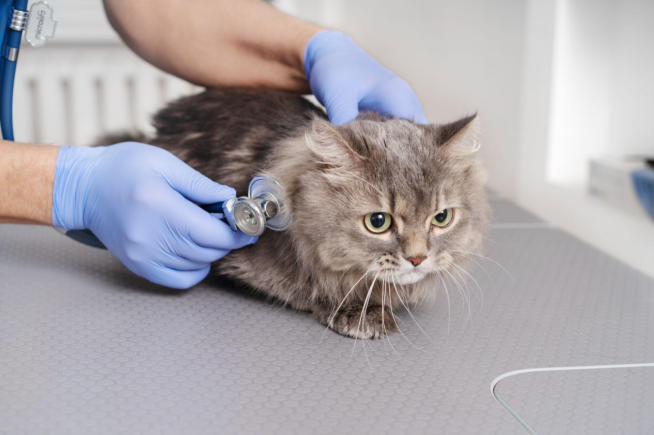
If your cat is:
● Straining with low urine output
● Sobbing or in obvious distress
● Blood clot formation
● Lethargic or vomiting
Then this is an emergency. Head to a vet immediately. Urethral obstruction may turn out to be fatal within 24–48 hours.
How to Prevent Cat Peeing Blood From Occurring Again
Once your cat has experienced blood in urine, your main concern should be the possibility of its recurrence. Luckily, preventing it from occurring again is achieved through simple steps.
The easiest way to prevent urinary problems is to make your cat consume more water. Many cats do not drink enough, especially when they are primarily fed dry food.
Once dehydrated, the cat will produce thicker urine, and this can result in irritation in the bladder, with the resulting symptoms in the form of crystals or inflammation.
● Try to feed soggy food once daily—it has extremely high moisture levels.
● Make it more tempting to drink by using a water fountain, as cats love running water.
● Set some water bowls throughout your house and refresh and clean them regularly.
This slight modification can significantly contribute to better cat urinary health.
Provide a Stress-Free Environment at Home
Surprisingly, stress has been one of the major triggers for urinary conditions such as Feline Idiopathic Cystitis (FIC), and this is often the reason for cat blood in urine. Cats are quite sensitive to the events around them, and the slightest changes may result in health disorders.
To assist:
● Make sure that you maintain the regular routine of your kitten.
● Provide them with an individual quiet place where they will be able to rest.
● Apply continuous use of a pheromone diffuser like Feliway to establish a peaceful environment
● Do not make loud sounds or rude interruptions.
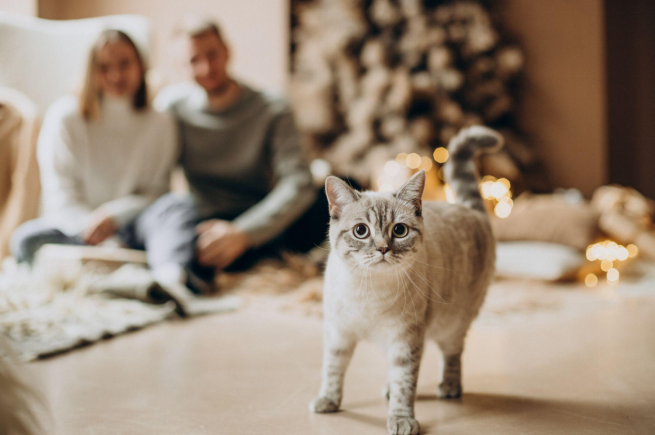
Litter trays may get dirty, resulting in infection and anxiety. Cats might refuse to use it, and this may cause urine retention, which is another predisposing factor to the problems with urine. It is important to clean the litter box on a daily basis and wash it once a week.
Place the litter box in a convenient and calm place. If you have more than one cat, you should always have at least one litter box per cat, plus one extra to prevent territorial stress and accidents.
Keep a Track Of Your Cat’s Health
Vet visits are important, especially when you usually find blood clots in your cat's urine. There are cats who have a predisposition to having problems in the urinary tract, and they may need sustained changes in their diet or medicine.
Watch for subtle changes like:
● Peeing more or less than usual
● Licking around their private area
● Becoming restless or isolating more often
When these early signs are caught, further harm can be avoided.
Special Care for Older Cats
Blood in elderly cat's urine may be a result of bladder or kidney diseases, which are common in cats as they get older. Observe their water, food, and toilet routine
Soft bedding, litter boxes that are accessible, and furniture adapted to joints can help make their life easier, and even improve their stress level, which can decrease the rate of urinary problems.
Do not dismiss the presence of blood in the urine of your aging cat, thinking that it is a part of old age. Have it checked so that you can eliminate serious complications such as kidney disease or cancer of the bladder.
Prevention begins at home. With pure water, stress-free surroundings, and close observance of the routine of your cat, you will reduce the chances of observing cat blood in the urine once again.
Always remain the same, be relaxed, and never be afraid to involve your vet where it might be wrong. You are the one who can make your cat happy and healthy all life long.
Summary: Behaving with Care and Compassion
When your cat is urinating blood, you simply can not stuff it aside and act as if there is nothing wrong with it. It could be as little as a UTI or as bad as crystals, bladder inflammation, or even cancer.
Only a vet can tell you for sure. Emergency care saves deteriorating situations and makes your cat start feeling better sooner. Make sure that they have plenty of water to drink, a clean litter box, and a stress-free space. With the use of the right medication, your cat will recover and remain healthy.
Label:
Popular Post

What to Feed a Sick Dog With No Appetite? [2025 Guide]
May 16, 2023
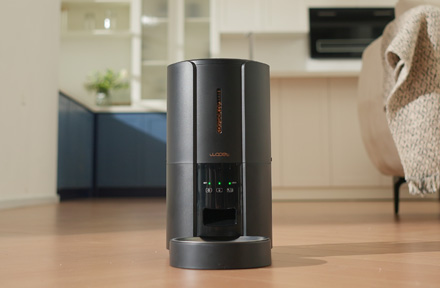
Troubleshooting Common Issues with Automatic Pet Feeders: Tips & Tricks for Pet Owners
Oct 26, 2023
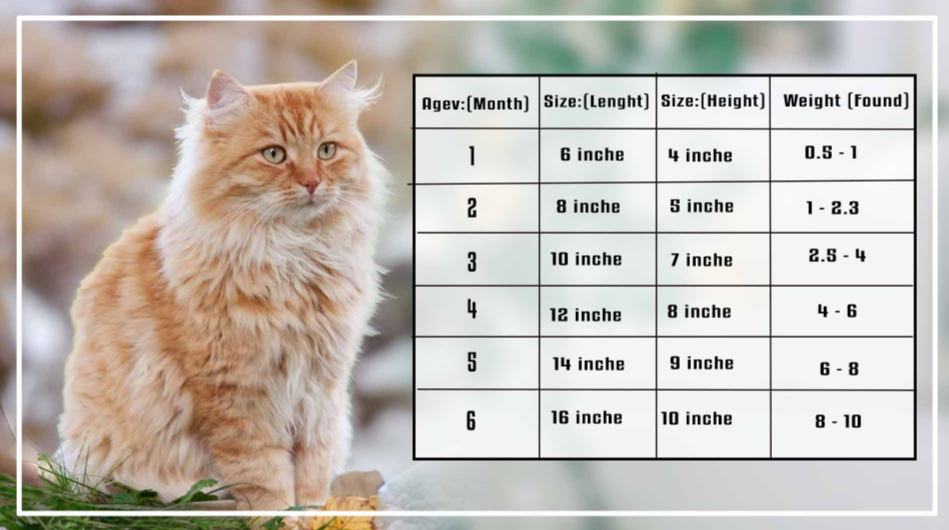
What is a standard Cat Weight chart by age Kg?
Mar 19, 2025
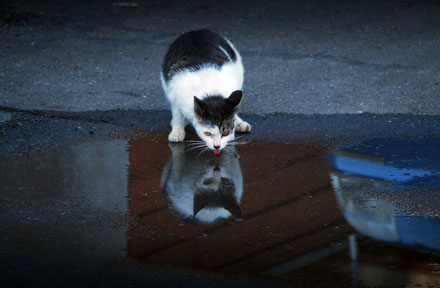
Why Does My Cat Cough After Drinking Water? 8 Potential Reasons
Mar 13, 2023
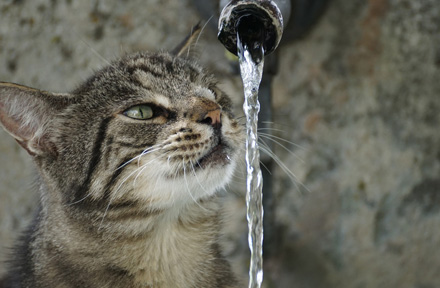
Why is My Cat Throwing up Water? Top 5 Causes Here
Feb 08, 2023
$109.99
$129.99
Copyright © 2025 WOPET. All Rights Reserved.